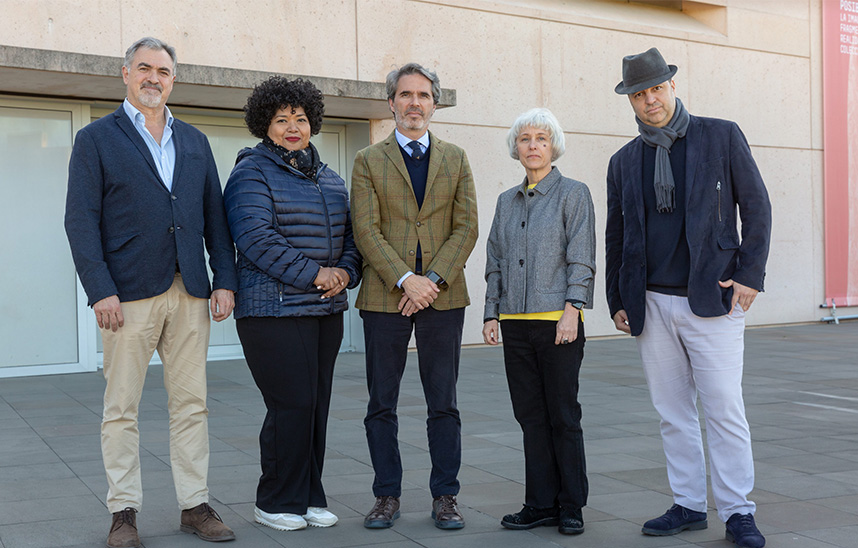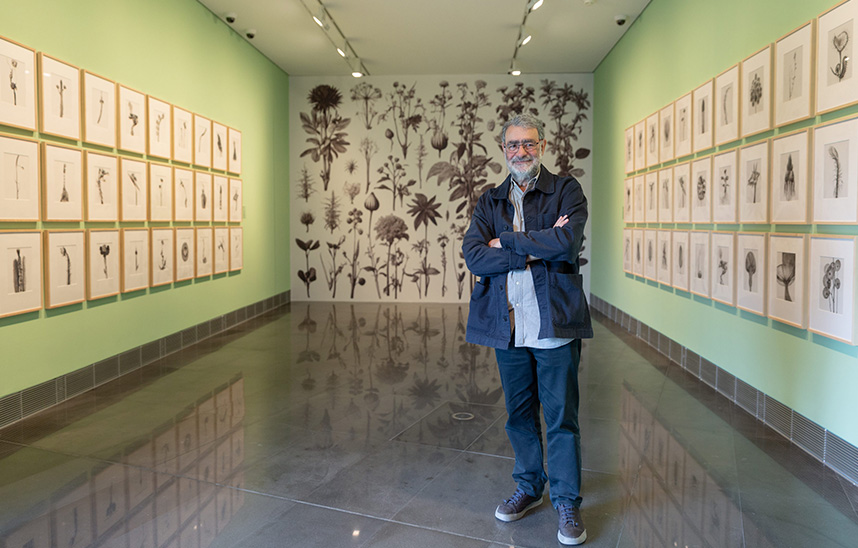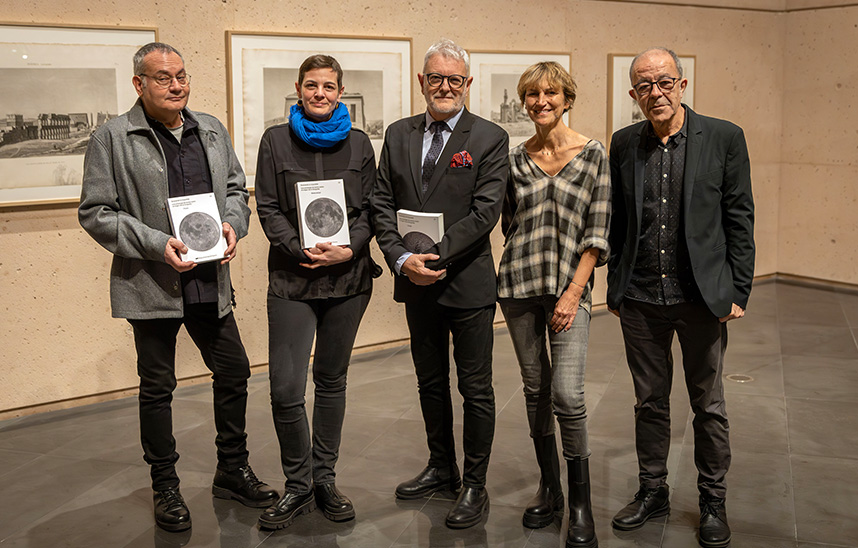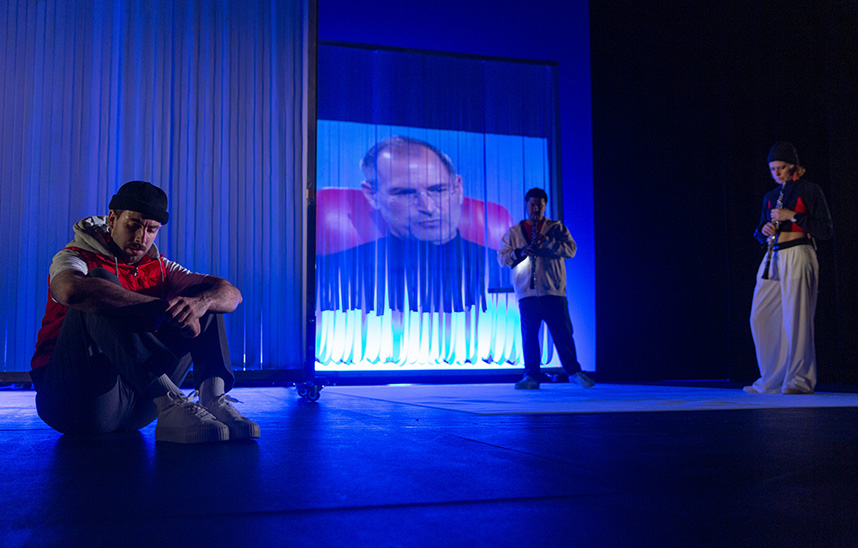noticia_MUN_2021_01_22_CANTAR_DE_CANTARES
Ignacio García, on his work 'El Cantar de Cantares': "It is a deep, sensory journey with images, about different facets of love".
The show opens this Saturday 23rd, at 7:30 p.m., at the Theater of the Museum of the University of Navarra and tickets cost 18 and 14 euros.

FotoManuelCastells/Image of 'El Cantar de Cantares', by Ignacio García, at the Museum.
22 | 01 | 2021
The images of José Ortiz Echagüe and the verses attributed to Fray Luis de León coexist in The Song of SongsThe new poetic and scenic proposal directed by Ignacio García, director of the International Festival of Classical Theater of Almagro, that the Museum University of Navarre premieresthis Saturday, at 19:30 hours, in its Theater. Tickets cost 18 and 14 euros. The show, produced by the Museum itself, has been developed in the artistic residency program of the center and presented this Thursday to the media.
Ignacio García, accompanied by Teresa Lasheras, manager of Performing Arts and Music of the Museum, explained that the proposal invites to "a deep journey through different facets of love. It is an eclectic show, which draws from many sources, and offers a patrimonial vision".
In this sense, he pointed out that El Cantar de Cantares proposes to the public to undertake their own journey "to another time, another space and another way of thinking and feeling, which has to do with that sensual world, which is in the text and in Ortiz Echagüe, and in the poetic empowerment. For the artist, "we live in a world in which, apparently, beauty has no place, and which asks for efficiency and capacity of management. But I believe that art always needs a space of poetic liberation through beauty, goodness and virtue. And the viewer is going to see that. The enormous power of love. Not understood in a romantic way, but in a telluric way".
A LIVING CREATIVE PROCESS
The creation of this work began in 2019, with García's first visit to the Museum, followed by another in February 2020, when he visited the file Fotográfico and came across the original photographs of Ortiz Echagüe, an artist to whom he has always had "a special emotional bond". In García's words, "Ortiz Echagüe reflected very well that pain of Spain in Unamun's words, a feeling of a world that is going to be lost forever and that he tries to fix with his photography. He captures a spirituality that has a lot to do with us. We can imagine Moorish Spain, both in the fortresses and in the human landscape. And it has an enormous attraction and a patrimonial vision".
When visiting the Museum's collections, the relationship emerged: "Seeing the originals led me to live a very powerful journey and there appeared, not voluntarily, but as an epiphany, the verses of Fray Luis de Leon. Seeing the photos of Mystic Spain and North Africa, it seemed to me that there was that connection. I began to listen to the verses of Fray Luis".
Thus was born El Cantar de Cantares, in the eighth rhyme translation of Fray Luis de León, on photographs by José Ortiz Echagüe, belonging to the Museum's collection, with musical selection and adaptation by Ignacio García and Rita Barber, directed by García himself. The work is performed by Ana Cris, Julián Ortega and Rita Barber.
ARTISTIC ACCOMPANIMENT
About this production, the first in the field of theater that the Museum has produced, Teresa Lasheras values the work set in the project: "It has been a privilege to work with Ignacio. He presented us with a project that seduced us because it fit perfectly with the keys of the Museum, the performing arts program and the residency program. We have done several projects to create choreographic works, but this is the first theatrical one".
He also emphasizes the special symbiosis that is created with the artists who participate in the artistic residencies: "We seek to establish a relationship of leave speed to be able to see the landscape together. It is atwo-way relationship, not only with the artistic and technical resources of the Museum, but also with those of research and teaching of the University of Navarra".
In this line, he values how the week in which García and his team have been at the Museum preparing the premiere has been: "It has allowed his creation process to be open to the university community. They have participated in meetings with students, in workshops... And the preview of the play will be this Friday, in a performance for students. In addition, Ignacio and the rest of the performers have been able to benefit from the specialized research on the Golden Age, through the GRISO (group of research of the Golden Age of the University of Navarra)".
For García, the program has been a place where formats, genres and styles can be proposed" and he values that "we are putting them on a par with Europe in terms of considering our literary heritage of the past in material Pass to become stage material".





